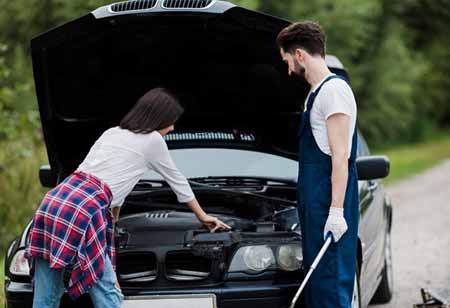Introduction
The rapid evolution of automotive technology is transforming every aspect of the driving experience, including roadside assistance. As vehicles become more sophisticated—with electric drivetrains, smart sensors, and connected capabilities—traditional roadside help must evolve in parallel. Today’s drivers expect fast, intelligent, and eco-friendly support, which is quickly becoming the industry standard. Whether addressing common breakdowns or deploying the latest high-tech interventions, the cost and breadth of roadside solutions, like those outlined at AAA roadside assistance cost, are expanding and adapting to meet new demands.
Technological advancements are reshaping how providers approach every callout. New services must be capable of addressing long-standing issues such as flat tires or engine trouble, as well as dealing with electric vehicle battery depletion, remote diagnostics, and next-generation communications between vehicles and emergency responders. Drivers who rely on roadside assistance now benefit from more seamless, efficient, and tailored support than ever before.
As digital integration accelerates, drivers and service providers alike are experiencing greater connectivity, allowing for innovative safety measures and predictive solutions. The industry’s latest wave of change is focused on responding to emergencies and preventing them, ushering in a proactive era for roadside support.
This means roadside assistance is now part of the broader connected transportation ecosystem, leveraging smart data, electric vehicles, and sustainability priorities. In turn, drivers gain peace of mind and new assurances of safety and efficiency on the road.
Embracing Electric Vehicle Support
The growth of electric vehicles (EVs) represents both a challenge and an opportunity for roadside assistance providers. Unlike traditional gasoline-powered cars, EVs rely on battery reserves that can be depleted without conventional fuel options nearby. This has driven the adoption of mobile charging solutions, equipping response teams with units capable of delivering critical charge to stranded vehicles, enabling them to reach the nearest charging station safely.
Specialized EV support services extend beyond charging. Service providers receive specific training for handling high-voltage batteries, potential software glitches, and other unique components of electric models. In addition, the logistics behind dispatching rapid-response charging vehicles are continually improving, ensuring no EV driver is left without viable roadside support when it matters most.
Leveraging Connected Technologies
Today’s vehicles are increasingly equipped with integrated sensors, telematics, and advanced communication systems. Roadside assistance providers use these capabilities to establish direct connections with cars, enabling real-time transmission of diagnostics and alerts. This data-driven approach allows services to address potential issues preemptively, improving safety while minimizing wait times or unnecessary dispatches.
Innovative systems also allow for broader public safety initiatives. For instance, real-time digital alerts can warn passing motorists about the presence of stranded vehicles or service crews, reducing collision risks and enhancing the safety of everyone on the road. Several leading organizations are partnering with technology partners to roll out such alert systems and protect responders and the public. According to Forbes, widespread adoption of these alert mechanisms is expected to save lives and provide a safer working environment for emergency service professionals.
Implementing Predictive Diagnostics
Artificial intelligence (AI) and machine learning have become fundamental in revolutionizing roadside support. By analyzing vast datasets—ranging from historical vehicle performance to live sensor readings—AI can identify potential vehicle failures before they escalate. This predictive capability streamlines the roadside assistance process, enabling dispatchers to allocate resources proactively, ensuring faster and more accurate interventions.
For service providers, AI-driven diagnostics can determine whether a service call should involve towing, on-site repairs, or mobile charging. This efficiency benefits users by reducing downtime and eliminating unnecessary costs for drivers and assistance companies. With connected technologies and predictive analytics working in tandem, proactive safety and reliability are now achievable on a much larger scale. You can read more about these advancements in this Forbes article.
Adopting Eco-Friendly Assistance Vehicles
Sustainability is another driving force behind the industry’s evolution. Many service organizations invest in all-electric or hybrid fleets, reducing emissions and addressing environmental concerns associated with conventional diesel or gasoline-powered rescue vehicles. These greener alternatives often feature quieter engines, which provide additional advantages in urban and residential settings, particularly during late-night operations.
This transition supports broader governmental and societal objectives toward carbon reduction and demonstrates the roadside assistance industry’s commitment to making a positive impact beyond immediate crisis response.
Enhancing Customer Experience with Digital Platforms
Dramatic improvements in customer service are being made possible by digital platforms and mobile applications. Drivers can now request assistance via apps, track their provider’s estimated arrival time in real time, and securely pay for services. These features deliver transparency and convenience, giving users more control in stressful situations while fostering trust in service providers.
Some digital tools even allow for follow-up feedback, helping providers continually enhance their responsiveness and quality of care.
Integrating Advanced Communication Tools
Communication tools now seamlessly and instantly connect all parties involved—drivers, dispatchers, and roadside technicians. Secure messaging, live GPS tracking, and automated notifications ensure everyone remains informed and updated, increasing efficiency during every emergency.
This direct and ongoing communication supports quicker response times and creates a sense of security for drivers, as they know help is always within reach.
Prioritizing Safety Through Technology
Service provider safety is paramount, and new technological integrations are critical. Features like infrared vision for nighttime visibility and enhanced high-visibility lighting keep response crews safe during roadside operations in low-light or poor weather conditions. Combined with vehicle approach alerts and placement sensors, these technologies reduce the risk of secondary accidents and ensure that motorists and roadside professionals remain protected during every callout.
Conclusion
As vehicles continue to advance, so must the services supporting them. The latest wave of innovation in roadside assistance—marked by advanced diagnostics, mobile charging, digital platforms, and eco-friendly vehicles—helps ensure that all drivers receive prompt, safe, and practical help whenever and wherever it is needed. This evolution creates safer roads and a more confident driving experience for everyone.

